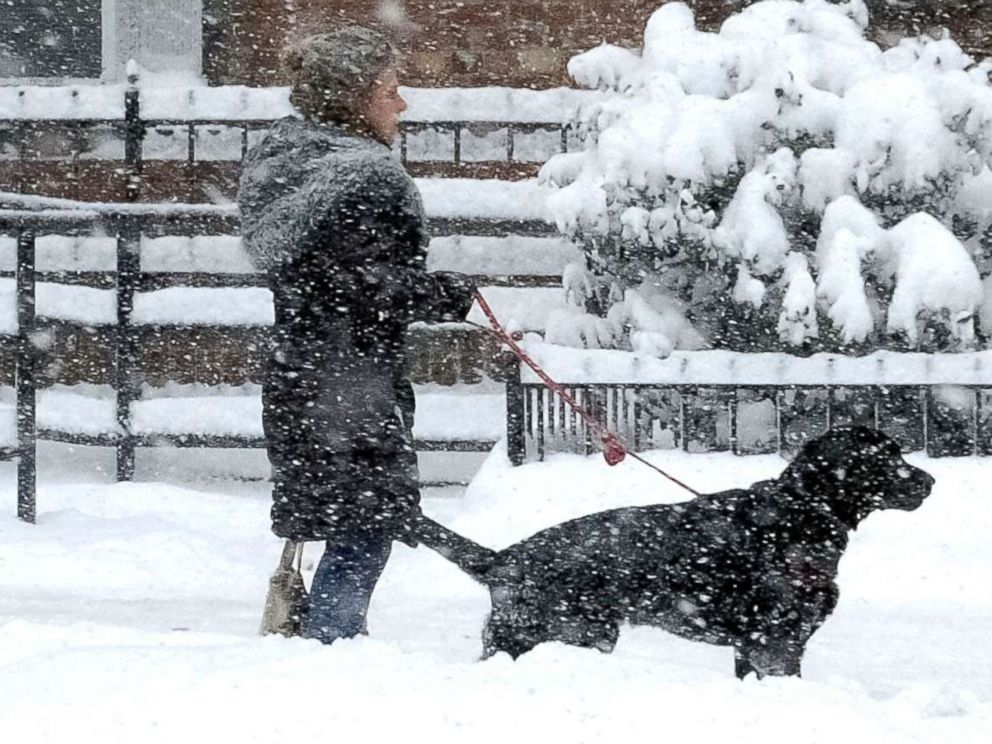How to keep your pets safe in frigid cold weather
There's more to safety than jackets and booties.
— -- Sub-zero wind chills are gripping the East Coast in the wake of the "bomb cyclone" snowstorm that hammered states from Florida to Maine this week.
With wind chills expected to dip to as low as 50 below zero in some areas, how can we protect our beloved furry friends from the extreme cold?
You've probably seen the little booties and coats people put on their pooches, for example. Do these actually help? And is there anything else animal lovers should know about for keeping their animals safe?
A jacket is a must
Ginger Zee, chief meteorologist at ABC News, gave viewers some tips on Friday's "Good Morning America." She said dogs' fur alone isn't enough to keep them warm according to the American Society for the Prevention of Cruelty to Animals (ASPCA). This is especially true for dogs with no undercoat.
The ASPCA adds that you should also never shave your dog down to the skin in cold weather, "as a longer coat will provide more warmth. If your dog is long-haired, simply trim him to minimize the clinging ice balls."

"You might want to add a sweater, especially if your dog has shorter fur," Zee said.
Furthermore, the booties and shoes you see on dogs aren't just for warmth, but to protect dogs' paws from the chemicals and salt used to thaw ice on the ground.
One more tip for dogs, Zee said: "You can wash them less in the winter, so they don't need to be as clean. That avoids stripping their skin of those essential oils and drying out their skin."
Monitor time outside
Kathleen Lynn, spokeswoman for North Shore Animal League America, tells ABC News that people shouldn't be afraid to take dogs outside in winter as they still need daily exercise, but be mindful about time. If you are cold and shaking, chances are your pooch is too.
"Thirty minutes is too long," she said, adding that studies have shown hypothermia can start to develop in animals in that time span. Instead, 10 to 15 minutes is preferred, but if your dog looks to be cold or shivering, keep them out for even less time and bring them in right away.
"Also, if they are wet [from the snow or ice], wipe them dry," Lynn said. "And most important, any time you take a dog outside, have them leashed, for both you and the dog."
Lynn also pointed to an in-depth Animal League advice blog that gives other tips such as about dogs' food and water intake during winter months.
"Heated houses are usually drier houses, and indoor dogs can easily become dehydrated ... So keep that water bowl full and clean," the article advises, adding that older dogs, especially those with medical conditions, need extra care during the winter. "Conditions like arthritis, hip dysplasia, diabetes, asthma, hypothyroidism, and heart disease can compromise a dog’s ability to regulate her body temperature. In addition, ice can be as hazardous for your dog as it is for you, especially for an older dog who’s a bit unsteady on her feet."
What about cats?
Winter isn't dangerous only for pups. Feral cats living outdoors are in some of the worst situations.
Lynn says if you interact or take care of a stray, buy a Styrofoam ice chest, tape the top on and cut a hole out on the side so maybe the cat can come and cuddle inside when it's incredibly cold.
"Maybe lure them in with some food," she added.
For cats or dogs living inside a home, watch out for them cuddling up to the fireplace. If they get too close, that could get burned from sparks and flames.
One thing is for sure no matter what pet situation you have.
"Please never let any animal outdoors to let it go," Lynn said of people who feel they can no longer keep a pet. "Surrender it to a shelter," she said.




